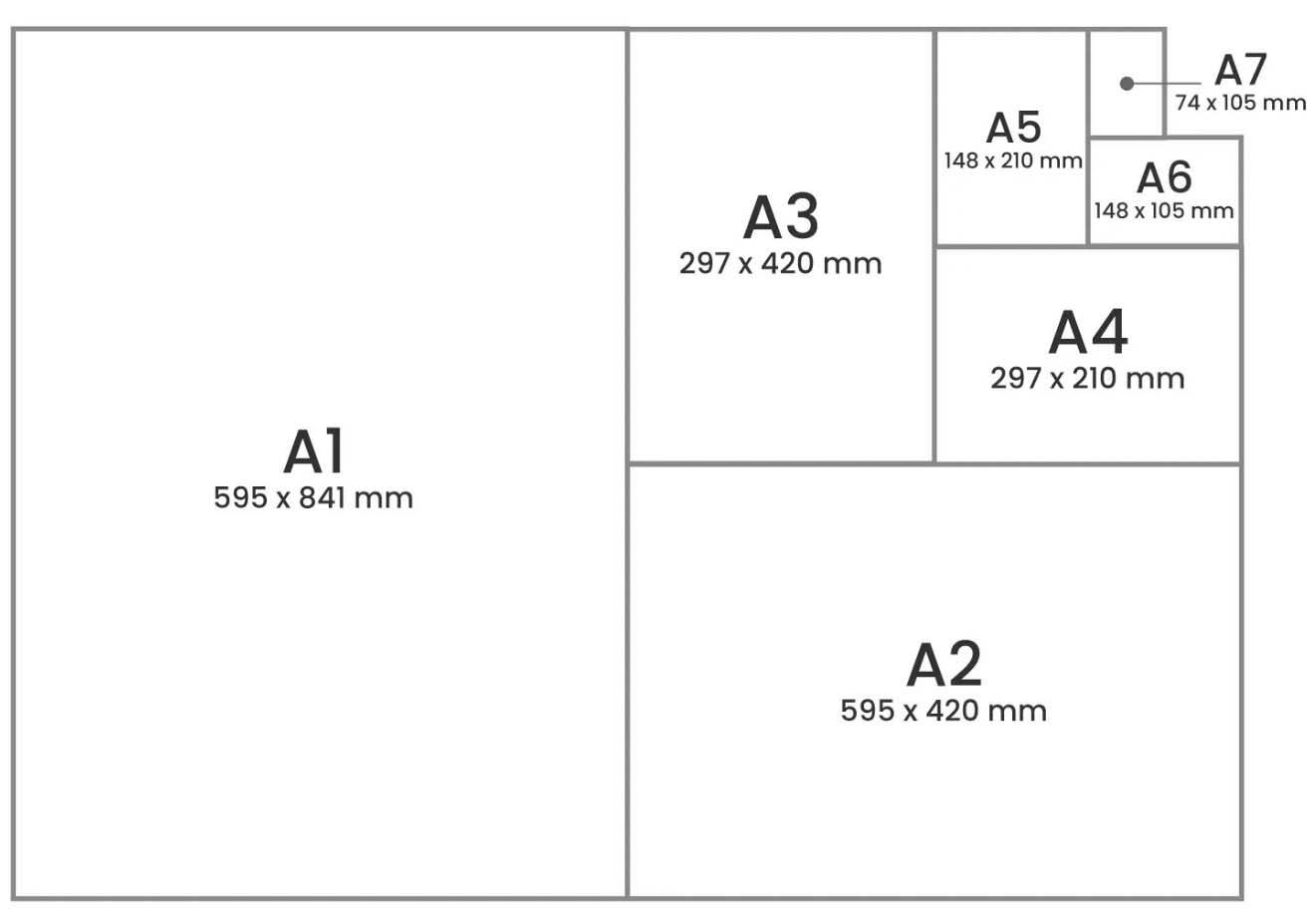
Guide to Common Paper Sizes
This in-depth guide delves into the different paper sizes frequently utilized for printed materials. As you design for these various document dimensions, remember the importance of using an oversized artwork file that incorporates a bleed area around its perimeter. A bleed area ensures that your design seamlessly extends to the edge of the final printed product without any unwanted white borders. For comprehensive guidance on how to include this crucial bleed area, consult our guide that specifically addresses creating the ideal bleed area for your artwork.
Image quality is paramount, especially when dealing with larger documents. To preserve the visual fidelity of your design, it's crucial to make certain that your artwork file is sufficiently large for the job at hand. In order to achieve the appropriate resolution for your specific project, refer to our guide which covers the best practices for obtaining the correct resolution when submitting artwork for larger printed products. This guide will provide valuable insights into achieving optimal print quality for your designs, regardless of the size or complexity of your project.
The ISO 216 Standard
ISO 216 is the international standard by which paper sizes are determined. The system establishes three sets of paper sizes, known as the "A", "B" and "C" series.
A Series

A4 is familiar to most as the most commonly available paper size in the world. A5 covers half the area of A4, A6 is half the area of A5 and so on. Conversely, A3 is double the area of A4, and so on up to A0, the largest in the series at 841 x 1189mm.
Though not covered by ISO216,
dimensions for A series sheets folded horizontally into three parts have also become widely used formats. These are commonly known as strip sizes, for example, A4 Strip is 420 x 148mm.
| Size |
Width in MM |
Height in MM |
| A1 |
595 |
841 |
| A2 |
595 |
420 |
| A3 |
297 |
420 |
| A4 |
297 |
210 |
| A5 |
148 |
210 |
| A6 |
148 |
105 |
| A7 |
74 |
105 |
SRA Sizes
SRA (Supplementary Raw Format A) sizes are a set of paper dimensions used primarily in the printing industry as raw formats, which allow for extra space around the final printed product for finishing processes like trimming and binding. SRA sizes are slightly larger than the corresponding A sizes defined by the ISO 216 standard.
SRA sizes provide printers with additional space for bleeds and other printing elements that extend beyond the final document size, ensuring that the final printed product has clean edges and a professional appearance after trimming. These sizes are commonly used for commercial printing projects, such as posters, brochures, and magazines.
The SRA series follows the same aspect ratio as the A series and has the same numbering system (SRA0, SRA1, SRA2, etc.). For example, SRA4 measures 225 x 320 mm, which is slightly larger than the A4 size of 210 x 297 mm. This extra margin allows for bleed areas and other finishing processes to be easily accommodated without compromising the final design.
SRA (Supplementary Raw Format A) sizes are a set of paper dimensions used primarily in the printing industry as raw formats, which allow for extra space around the final printed product for finishing processes like trimming and binding. SRA sizes are slightly larger than the corresponding A sizes defined by the ISO 216 standard.
SRA sizes provide printers with additional space for bleeds and other printing elements that extend beyond the final document size, ensuring that the final printed product has clean edges and a professional appearance after trimming. These sizes are commonly used for commercial printing projects, such as posters, brochures, and magazines.
The SRA series follows the same aspect ratio as the A series and has the same numbering system (SRA0, SRA1, SRA2, etc.). For example, SRA4 measures 225 x 320 mm, which is slightly larger than the A4 size of 210 x 297 mm. This extra margin allows for bleed areas and other finishing processes to be easily accommodated without compromising the final design.
B Series
Using the same aspect ratio between height and width as the A series, B series sheets appear to be the same shape as A sheets. However, the sizes are slightly different. The B series takes as its starting point a 1m width for B0. As a result, each B series paper size is slightly larger than its A series counterpart.
C Series
The C series was a set of paper sizes that were part of the ISO 216 standard, alongside the more commonly known A and B series. Although it was rarely used and isn't the focus of this guide, it's worth mentioning for the sake of completeness.
The C series was intended to provide sizes for envelopes that could accommodate A series paper sizes. For instance, a C4 envelope was designed to fit an unfolded A4 sheet, while a C5 envelope would be suitable for an A5 sheet. The dimensions of C series paper sizes were calculated using the geometric mean of the corresponding A and B series dimensions, ensuring that the aspect ratio remained the same.
However, the C series became less relevant over time, as alternative envelope sizes and formats gained popularity. As a result, the C series was eventually withdrawn as an ISO standard in 2009. Nonetheless, some of the C series sizes may still be encountered, particularly in the context of envelopes and stationery.